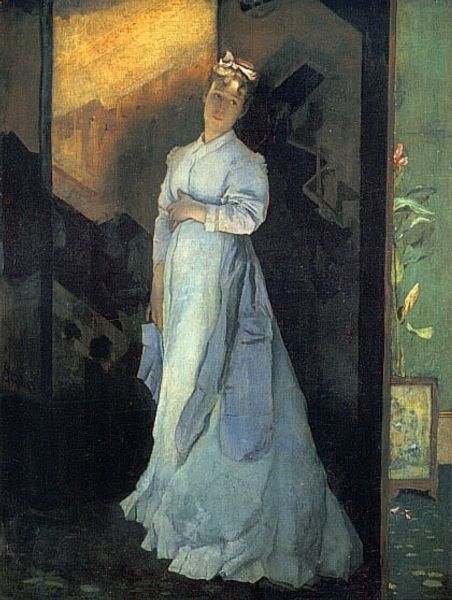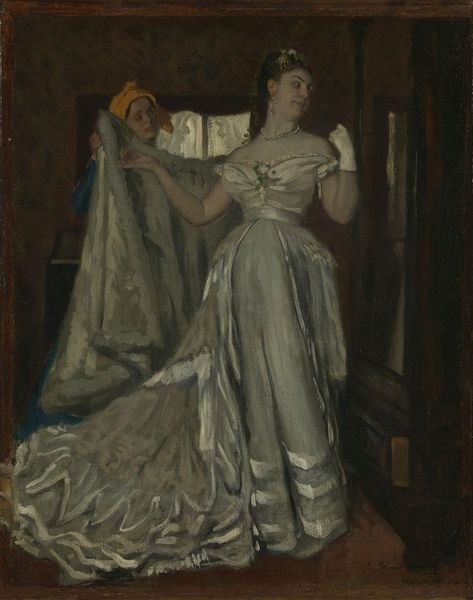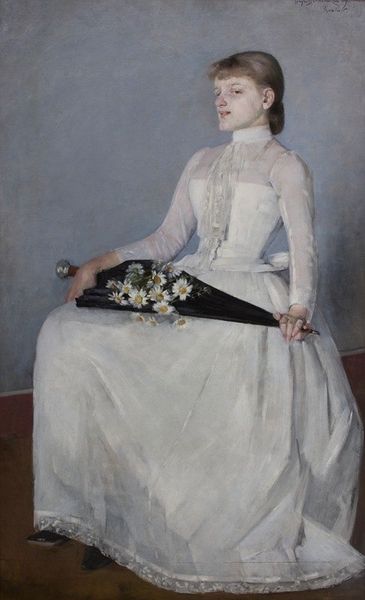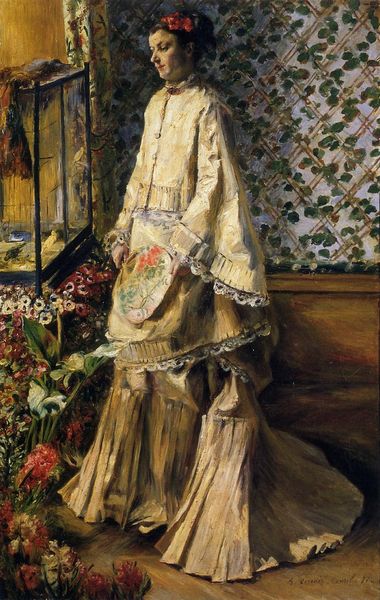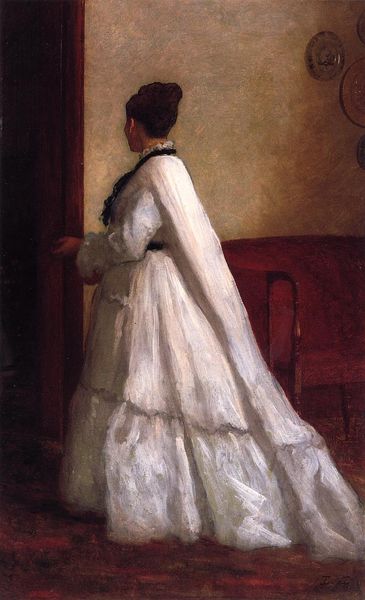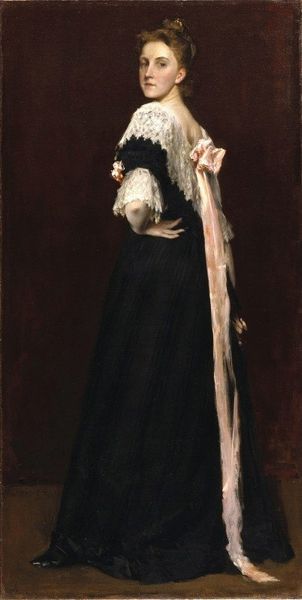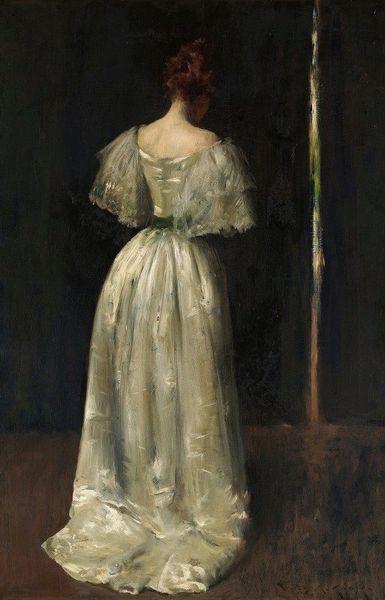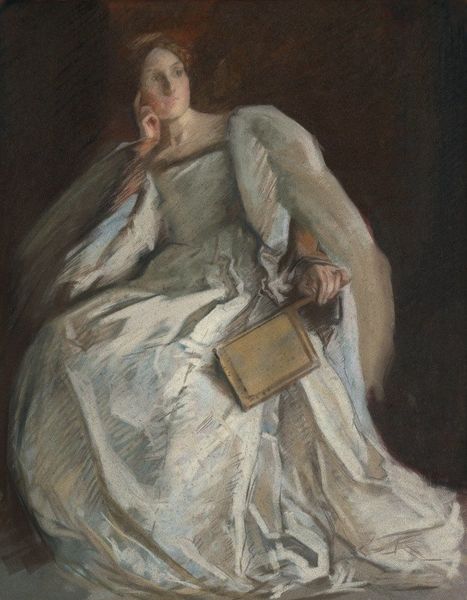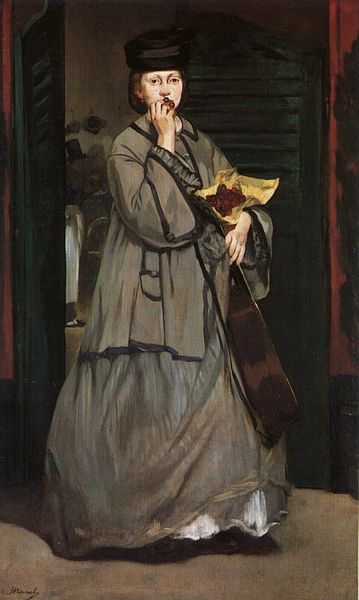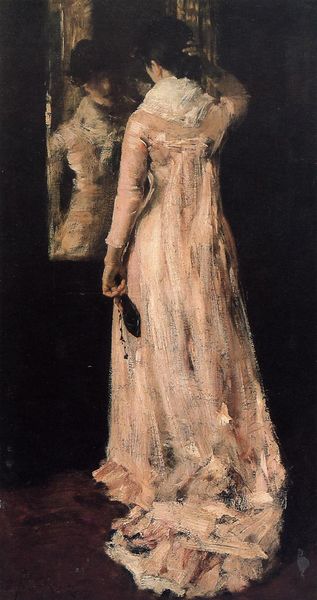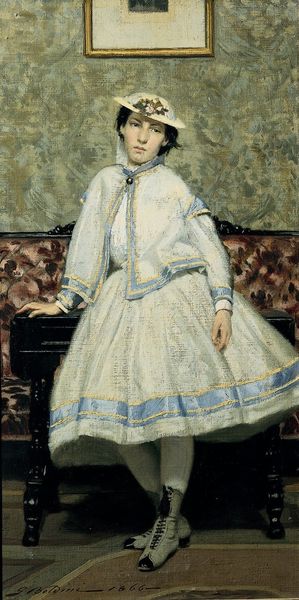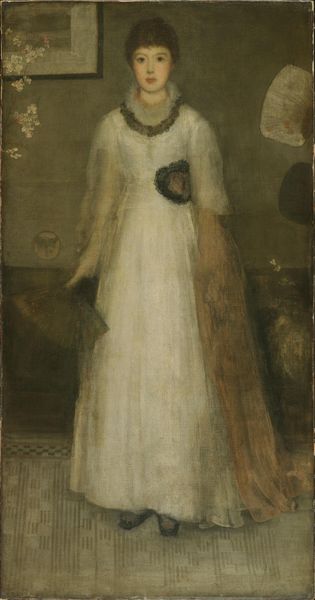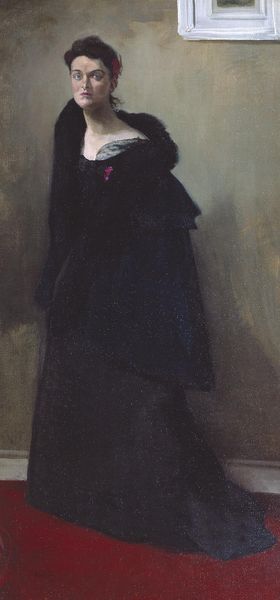
oil-paint
#
portrait
#
impressionism
#
oil-paint
#
oil painting
#
romanticism
#
genre-painting
#
portrait art
Copyright: Public Domain: Artvee
Editor: So this is "L'emotionnée," by Alfred Stevens. The date is unknown but it's oil on canvas. She looks despondent... what do you see here? Curator: I see a portrait deeply entrenched in the complexities of 19th-century bourgeois femininity. Stevens gives us a woman overwhelmed, yes, but by what exactly? Is it romantic disappointment? The societal constraints placed upon her? The painting invites us to consider how women's emotions were both pathologized and aestheticized during this period. Look at her positioning; trapped between domestic space and what might be just beyond that wall. Editor: Trapped… you mean because of the walls being green? It looks like she has a letter in her hand; is that a clue about why she’s leaning on the wall like that? Curator: The letter is a symbol, of course. Perhaps a missive carrying unwelcome news. But consider this: what kind of social role would leave her this distraught and where would she be allowed to safely feel it? Middle-class women navigated incredibly restricted paths. Her emotional expression, while seemingly personal, is inevitably intertwined with her prescribed social identity. Her emotion isn’t just personal; it is intrinsically socio-political. Editor: Wow, that's something I hadn't considered. The social restrictions shaped the ways women could feel and express their emotions… So many nuances for such a simple painting! Curator: Precisely. And it's through these nuances that we gain a richer understanding of both the art and the historical forces at play. Editor: I hadn't thought of looking at the painting as a document on social identity and the politics of emotional expression. This has opened up an entirely new perspective for me.
Comments
No comments
Be the first to comment and join the conversation on the ultimate creative platform.
